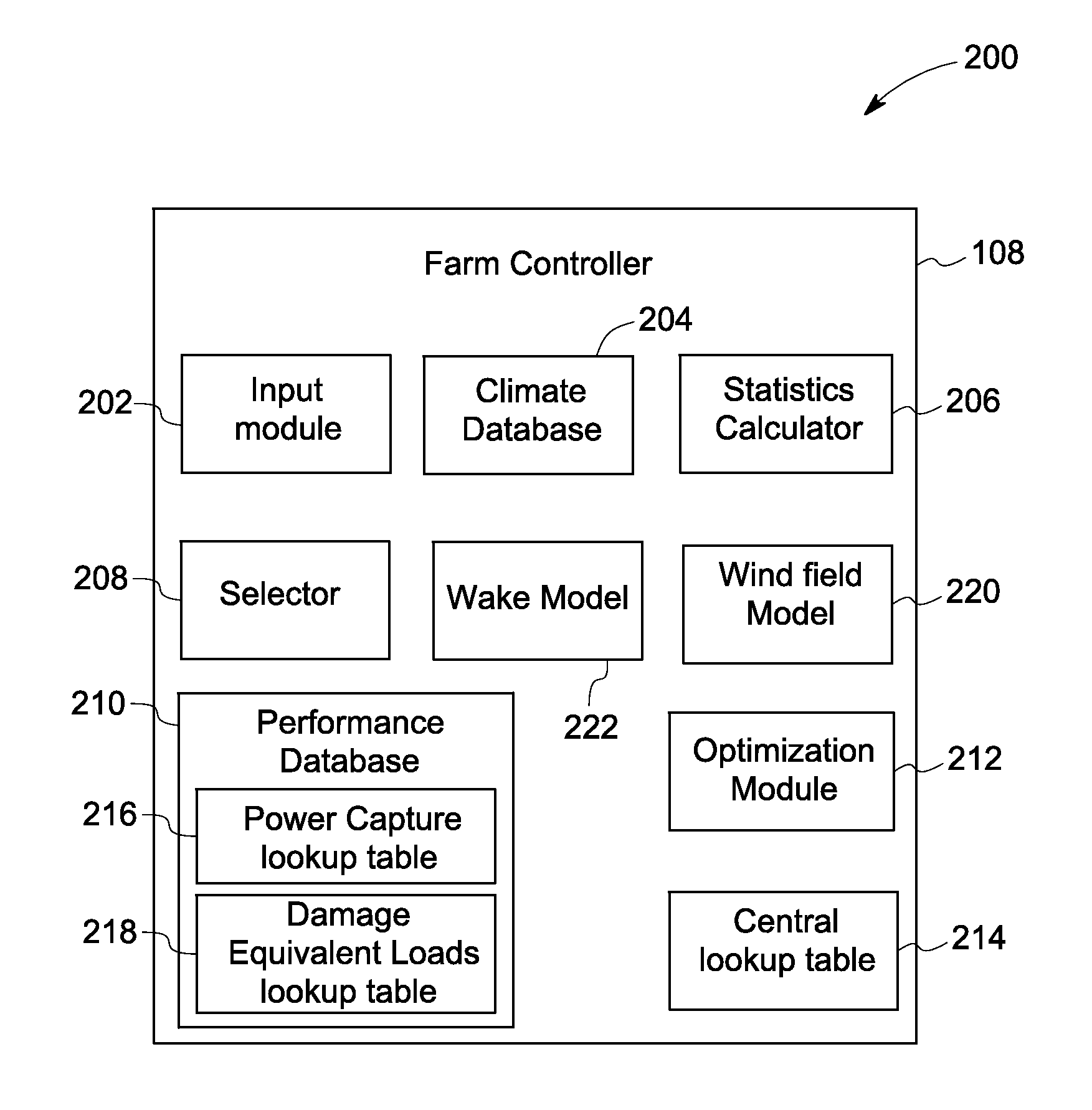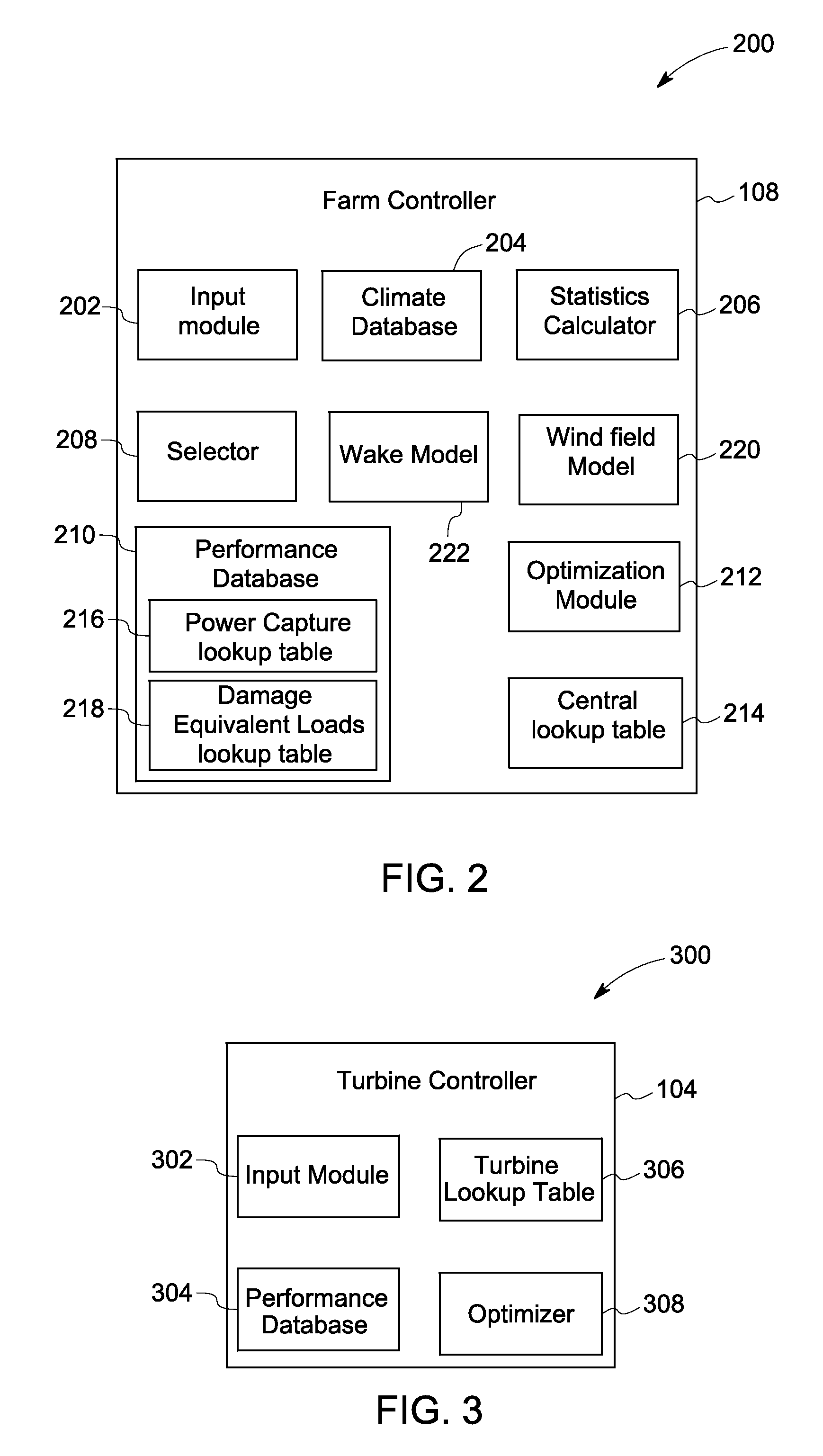Methods and Systems for Optimizing Farm-level Metrics in a Wind Farm
- Summary
- Abstract
- Description
- Claims
- Application Information
AI Technical Summary
Benefits of technology
Problems solved by technology
Method used
Image
Examples
Embodiment Construction
[0017]Embodiments of the present disclosure are related to a system and method for optimizing one or more metrics of a wind farm. For example, the methods and systems described here may be utilized to optimize power capture at the wind farm or the fatigue loads experienced by the wind turbines in the wind farm.
[0018]A wind farm includes multiple wind turbines coupled to one another and to a central farm controller. The farm controller receives prevailing wind information, including wind speed and wind direction from one or more sensors around the wind farm. Various empirical models present in the farm controller, such as wind field models, wake models, and turbine performance models may provide an estimate of wake-effects of one wind turbine on other wind turbines. The farm controller further selects the best optimization metric for the wind farm based on the current wind information, assimilated wind climate, and turbine damage equivalent loads. Moreover, the farm controller may se...
PUM
 Login to View More
Login to View More Abstract
Description
Claims
Application Information
 Login to View More
Login to View More - R&D
- Intellectual Property
- Life Sciences
- Materials
- Tech Scout
- Unparalleled Data Quality
- Higher Quality Content
- 60% Fewer Hallucinations
Browse by: Latest US Patents, China's latest patents, Technical Efficacy Thesaurus, Application Domain, Technology Topic, Popular Technical Reports.
© 2025 PatSnap. All rights reserved.Legal|Privacy policy|Modern Slavery Act Transparency Statement|Sitemap|About US| Contact US: help@patsnap.com



